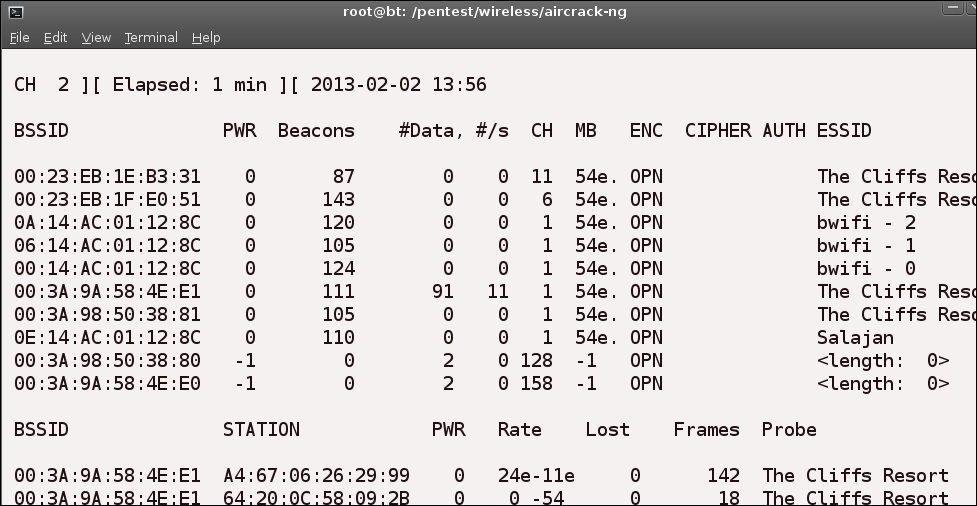The next tool we want to work with is the airodump-ng tool. This is another powerful tool with many features that is available within Backtrack. We will look at this tool in more detail in the next chapter, but for now we will use it within the context of surveying our wireless zone. Go to Applications | Backtrack | Information Gathering | Wireless Analysis | WLAN Analysis | airodump-ng.
Once the window opens, enter the following command:
root@bt:~# airodump-ng mon0
This should result in a window that will display information about the access points that are being detected by the card. An example of this is shown in the next screenshot:

As you can see from the screenshot, the output is similar to that of the ssidsniff tool. One of the features that airodump-ng has is, it can be used with a Global Positioning System (GPS) receiver; it will then display the coordinates of the discovered access points. In the previous screenshot, all of the access points that have been discovered...



